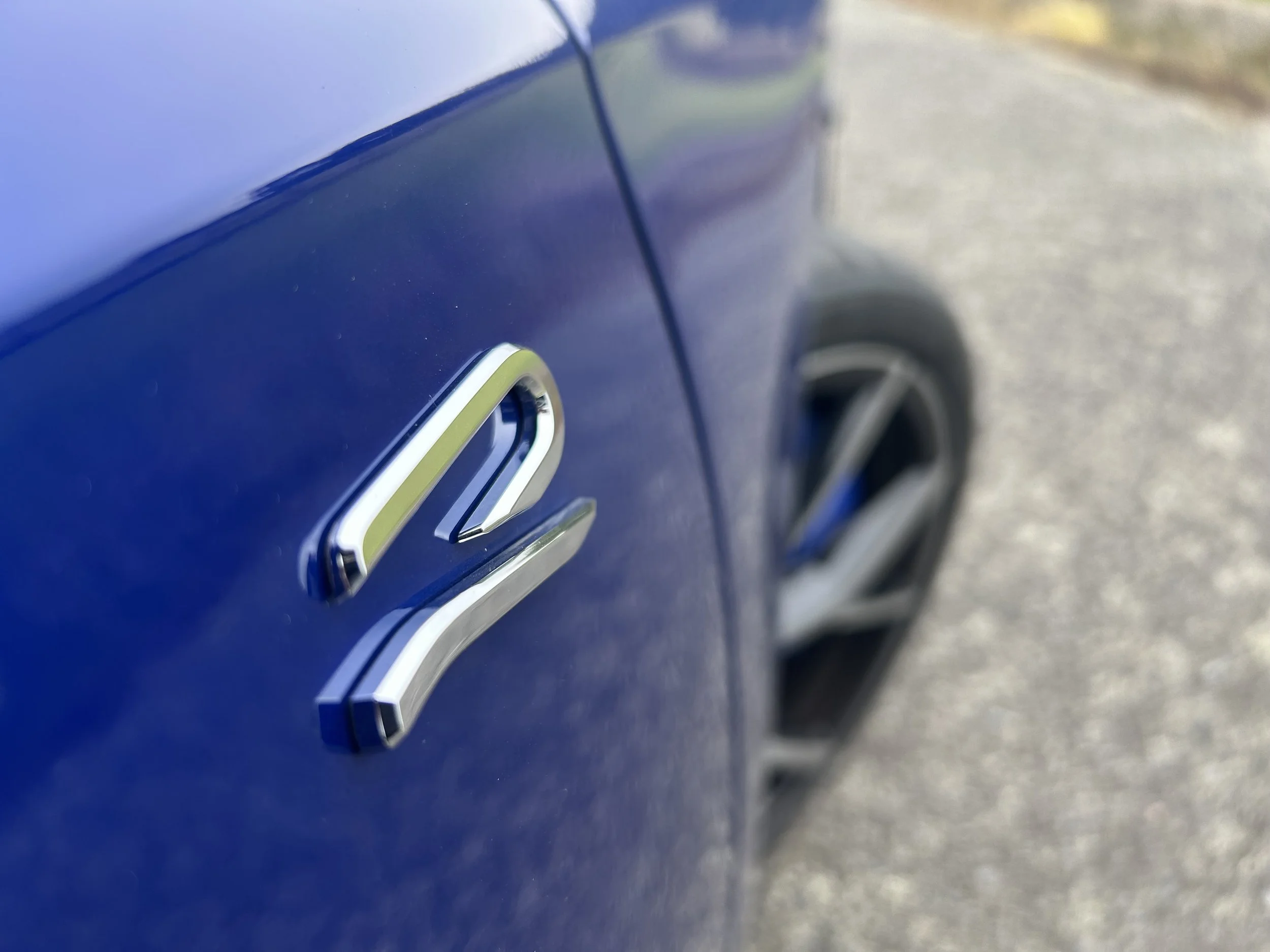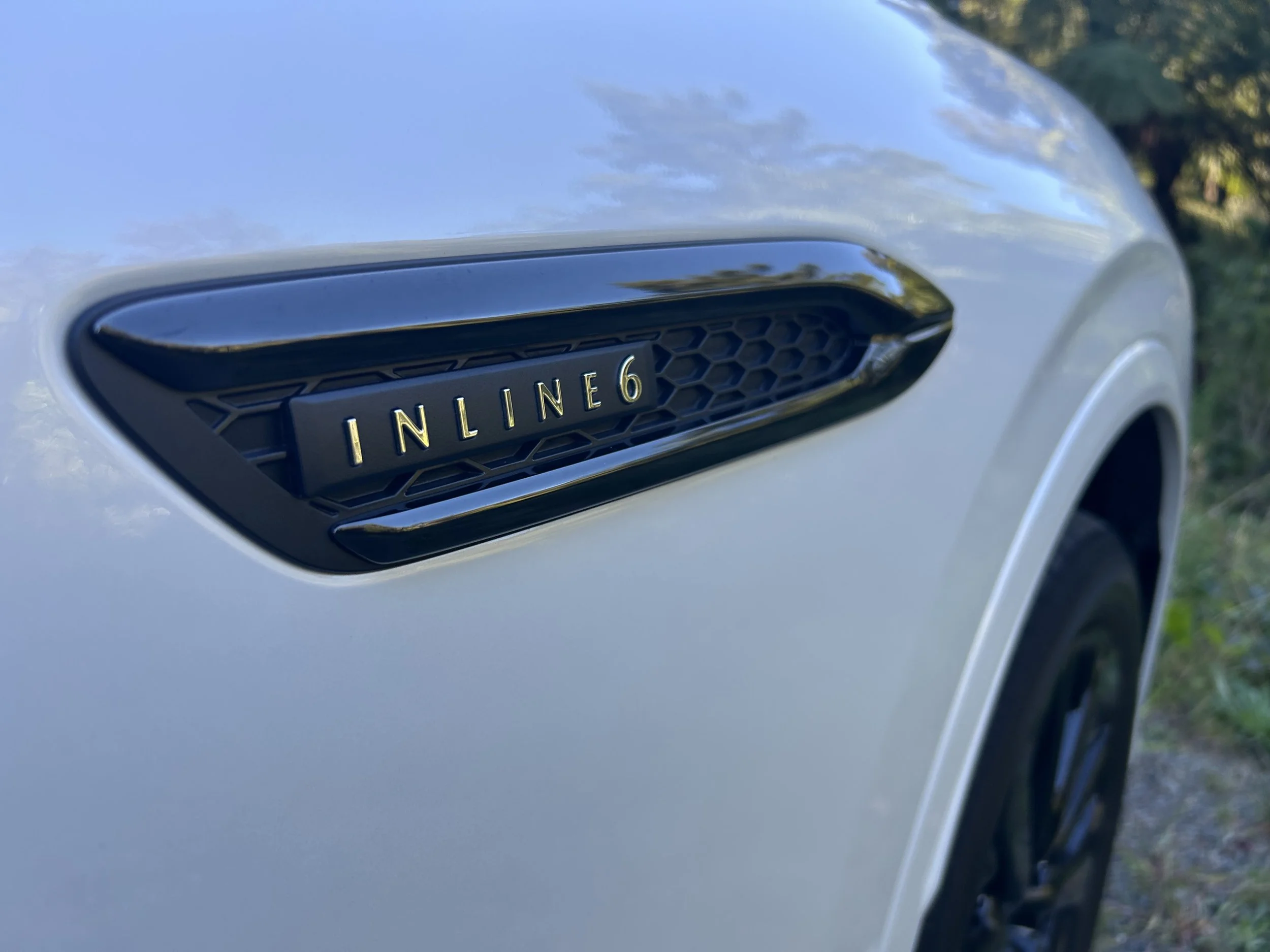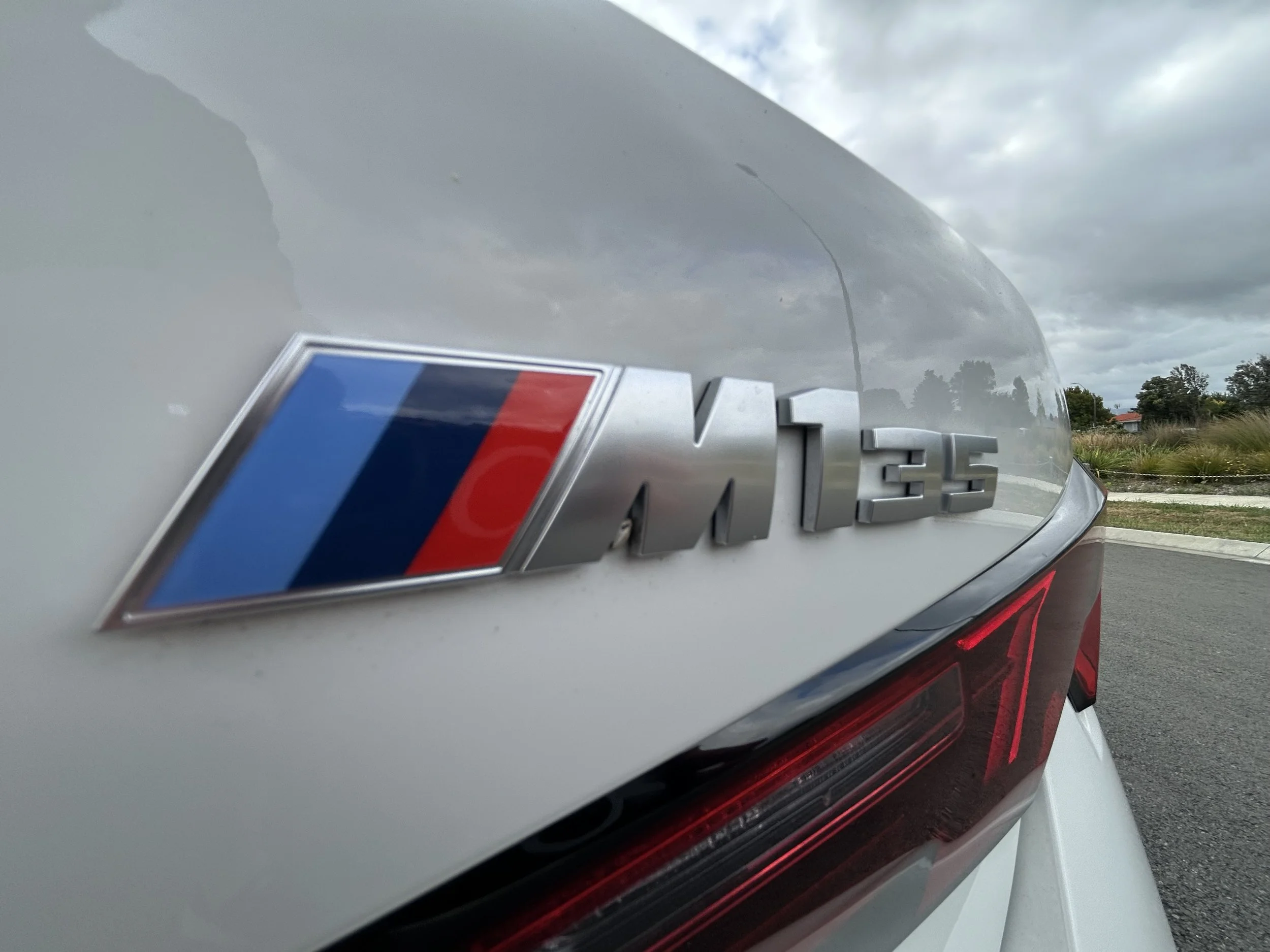GWM Tank 300 Lux Hybrid/ 500 Ultra road test review: Welcome to the big time
/GWM is doing it tough and rough with a pair of off-roaders that take old-school in a new powertrain direction. Can they blaze a new trail?
Prices: $56,990; $82,990.
Powertrain: 2.0-litre four cylinder petrol with electric assist, 255kW/648Nm (including 78kW/268Nm electric motor), 1.8Wh LFP battery.
Transmission: Nine speed, part-time four-wheel-drive.
Brakes and stability systems: Discs front and rear; ABS, AEB,.
Safety rating: Five star ANCAP.
How big: Length, 4760/5070mm; width, 1930/1934mm; height, 1903/1905mm.
We like: plenty of kit for the money; strong warranty; solid driving feel; 500’s seven-seater appeal.
Not so much: Overly intrusive DMS; some cost-cutting materials feel cheap; is this powertrain a diesel alternate?
WHEN I finished with the Tank 300, it was straight into the big brother 500 - and one user improvement transferred: A thumb-sized section of duct tape.
The inner part of the driver’s side A pillar on both of these Great Wall Motors’ sports utilities features a small pod, the housing for a driver monitoring camera that’s always active. Always all seeing. Always all knowing. And always interfering. All too much.
DMS is an accepted burden for international effort to elevate safety; new cars stand no chance of winning a five-star ANCAP/NCAP without. Stars sell cars. And lane keeping, traffic sign recognition, adaptive cruise and rear cross traffic alert are proven accident avoidance tech. Attention alerts that sense tiredness and distraction are as valuable. If calibrated correctly.
Many new products from China seem on hair trigger, but I gave these the benefit of the doubt. A short-lived hope.
The pick up point was still in the 300’s wing mirrors when … bing, bong … it wanted me to pay closer attention to the road. Moments later … bong, bing … the system again.
This time it suggested I might consider taking a break. From there to my home is a 15 minute drive. It felt like an eternity. I kept a finger across the lens for that, but knew then any hope of maintaining sanity as a Tank commander for the following fortnight rested on a more practical remedial action.
I have a race car, so I have 200mph tape. You can guess the rest. Covering the lens meant at start-up from thereon, a small message sounded (yes, these car speak) to say DMS had glitched. I felt bad. But, also … good. When swapping from one type to the other at the local dealership, my fix was spotted by the chief salesman. He nodded approvingly then related “we do that before any customer test drive.” So now you know.
If Tank product is too hard in this respect; it’s because it’s working very diligently to be noticed in every possible way.
The naming convention is a reflection of GWM’s spirit of forcefulness. Demand to be noticed is a brand ethos; hope to be accepted as a cut-price alternate to big name products that are highly respected as well-sorted old school off-roaders is the aim.
Ostensibly, those who live and breath Land Cruiser, Jeep or Land Rover - perhaps more likely the older, trad-types than the very latest ones - are being gunned for, but will they easily accede?
No matter how confident their visual ruggedness - particularly obvious on the 300 because of its marked fender flares, solid-looking underbody protection and hearty 224mm of ground clearance - there’s the question of actual competence, not only in immediate return but over a long term. We’ve been there, done that with utes from this source country and found some wanting.
How many large off-road SUVs are operated to extreme is a hard one to quantify - we’ve all got that neighbour who never takes his urban assault rig off seal - but, if they are used as designers and engineers intended, then that exercise becomes a judgement of integrity whose outcome will make or break not just gear, but reputations.
What seems okay based on a few hundred kays of easy driving on seal and gravel and easy going off-road conditions is hardly a full picture assessment of likely integrity. For that, they really need to endure trial by mire, and not just for days or even weeks but months, if not years.
Solid, proven design ideals therefore count a lot. On those grounds, the Tanks start well, being built to convention: Full frame platforms, coil spring rear suspensions, solid four-wheel-drive systems and good ground clearance. On any off-road excursion, you’d be prudent to employ a 300 as pathfinder, given it has the better approach and departure angles and best wading depth.
There’s really only one area where they are going off that familiar track - that’s in the engine bay. Diesel is the life blood of this sector, so challenging with a petrol hybrid is no small thing, not least when the power plant itself might be considered a touch puny in scale. Can a 2.0-litre four-cylinder really face down bigger-lunged, higher cylinder count compression ignition units?
In the Chinese domestic market, manufacturers commonly draw heavy inspiration from western cars. Let’s just say there’s a LOT behind GWM’s brash logo, an intertwined capital T and U to represent as ‘toughness for you’, that will seem somewhat familiar.
Jeep Wrangler, Suzuki Jimny, Land Cruiser 70-Series … you see them all in this body shape. The interior design takes significant inspiration from another exterior design influencer, the Mercedes G-Wagen, just in more price-appropriate materials (leather like material covers the seats and doors, a weird black faux woodgrain on the dash ). Boxy, slab-sided, flat windscreen, round headlights and broad fender arches over wheels at each corner … as much as others have been there, done that, it’s got a cool retro vibe that might just work for customers. Even the burnt orange paint seems to work.
The 500, is a bit more homogenous and so wholly different in look and ambience to the smaller model you might not even realise it was from the same maker.
Here the metal shaping seems to take guidance from two generations of Land Cruiser (even to point of cribbing the Toyota’s champagne silver paint) and Nissan’s long-serving Patrol, with another twist. Inside, too, the layouts and buttons could have come from a Toyota warehouse. The full instrument glasshouse is as per the 300 (so, as per a Mercedes) but even more extravagant in its displays. A passenger who is highly familiar with the current Land Rover Defender swore one in the GWM was just as he has seen it in the Brit battlewagon. The gear controller could well be GWM’s.
Some latest large SUVs are almost car-like in on-road attitude. Some less so. The GWM are in the latter box. They’re not all at sea, yet also ask to be cruised like ships of the road. While more sophisticated drive modes naturally lend the 500 a more defined dynamic edge, like the 300 it still asks for a considered, careful approach and will rebel at outright hard hustling. Better to bring it back a clock and enjoy the refinement.
In urban running, they are fine, better than expected from their ilk, actually. The light steering, the softly slurring nine-speed transmission and reasonable visibility helps (so too the cameras). As in common for their type, they will of course fill a car park and threaten to dominate narrow city streets.
Part-time four-wheel-drive is an interesting call. Running in rear-drive unless you determine to do otherwise saves fuel, yes, but when to invoke full 4WD comes down to human judgement, there’s always potential for bad decision-making.
Speaking of … insofar as the 4WD hardware is concerned, the Tanks tick boxes competently. Low range involves across both and while neither have a centre diff, in the high spec formats tested GWM delivers locking differentials front and rear, which will be useful in tricky spots, and crawl mode is an extra not all offer.
However, if you were keen on going into the wild, consider upgrading from their road-biased tyres. The choices offered on the test cars were fine on sand and across river stones, but with the test period being rain-plagued, it seemed too risky to go ahead with a planned farm excursion.
As said, the powertrain is where it steers away from the pack. Petrol makes a nice change from diesel in that it’s quiet and refined for the most part.
The outputs are stupendous enough to suggest that a turbocharged 2.0-litre four-cylinder with hybrid, and a lot of electric assist, is a good idea. Reality is less convincing; if anything, it reminds that emulating what is surely a primary allure of driving diesel - that big tidal wave of torque from low revs - is a challenge and a half.
At 5.7 metres long and 2.6 tonne on the scales the 500 is a big ask, and while it is tangibly smaller and 500kg lighter, the 300 is also a chunky thing. In general town and around driving, it’s hard to find moments when the powertrain doesn’t suit. That sense of quiet resolve maintains when 100kmh is reached, too. On an easy throttle.
But there are limits to its achievement. What if you’re hitting a hill, or intending to overtake? With compression ignition, you need just add more throttle and feel the surge. GWM’s drivetrain hasn’t that pluck; it’s not instantly reactive to deep inputs and, when response does feed in, pace improvement is measured. It’s not wussy, but neither is it the same as what we’ve been used to all these years. Some might feel that, if this is progress, they might prefer to opt out.
Given their obvious utility role, the real test will be how well it deals with load. I lapsed in never getting a full consignment of occupants on board (five for 300, seven for 500) but, in any event, with the 300 rated for hauling 2500kg and the 500 for 3000kg, the bigger test of true mettle would have been towing. Neither came with a tow bar.
Those who strive to see it as a diesel substitute might wish for improvement in economy; the Tank 300 hybrid has a cited official consumption of 8.4 litres per 100km, the 500 should lend 8.5. But neither was within cooee those; citing 10.2 and 11.4 respectively, and that largely from single occupant and otherwise unloaded use.
That aspect highlights how modest-sized the battery is and also how the electrics involve. Friskiness falls off when that 1.76kWh depletes. Programming prioritises electric for start off but also attempts reversion to electric mode at cruise if the terrain is easy enough to sustain rolling inertia. In that mode, reviving the engine asks for a big push of the throttle, with response occurring momentarily afterward. When there’s too little electrical impetus, it’ll step up regeneration through coasting and braking ands, beyond that will draw energy from the engine. You can hear the change in note and the drinking rate increases.
The powertrain being a something of a positive response to the tide of criticism about the planet-destroying impact these vehicles are cited as being capable of is worth discussing. Though, of course, the likelihood of winning any ground in countering that resentment is likely hugely impeded by models’ physical size and the larger irony of the naming culture.
Of course, their dimension is not wasted when it comes down to interior space.
The 500 in particular seems enormously practical, almost a half-way house between a conventional car and a large van. For all that, if you want a big boot, go for the 500 - and use in as a five-seater - because the 300’s cargo area isn’t massive. GWM puts the spare wheel on the back of tailgates which opens to the side like a barn door rather than upwards. It frees up boot space and improves underbody ground clearance, but does make the doors heavier to open.
The finishes are utilitarian, but with a luxurious edge, outward visibility isn’t so bad - you can see the edges of the bonnet from where you're sat but they also facilitate a camera view that shows what the metal is hiding - and there’s good room for adults in the front and second row. But beware the 500’s rearmost jump seats are for children while the 300’s back bench is too close to the floor, which impacts under-thigh support.
These models have a wireless phone charger, heated steering wheel, heated and cooled front seats, eight-way adjustable driver’s seat with lumbar adjust, auto up/down windows on all four doors, auto-dimming rear-view mirror, wireless Apple CarPlay and wired Android Auto, reversing tracking assistant and auto parking assist among their features.
Prestige value often drives SUV choice. Here it is is sketchy, but perhaps how comfortably these will sit in the carparks of the higher-end golf courses of the nation - though they will certainly stand out if in the 300’s sunburnt orange - is simply not a reason to buy.
It’s more about the perceived practicality from pricing that also delivers a seven-year unlimited kilometre warranty carrot, strong comfort and convenience involvements and - annoying as some of it is, moreso in the 300 than the 500 - very comprehensive occupant protection technology.
Autonomous emergency braking (AEB) with pedestrian and intersection intervention, front collision warning, lane-departure warning and lane-keep assist, adaptive cruise control, traffic sign recognition and emergency lane-keeping, front cross-traffic alert with brake and highway assist are fitted. Dual front airbags, front-side airbags, curtain airbags covering both rows, and a centre airbag between the front-seat occupants include.
Usage patterns most likely to mainly involve trailing around suburbia will be a cinch, of course, and you could imagine a 300 being employed for actual work, but how well they ultimately infiltrate into the scene will depend very much on the flavour of feedback from ownership experience. Those who give it a bash and find it passes muster could be the brand’s most valuable salespeople.
It all starts here. And, with China’s ambition to become a bigger player in the global automotive scene clearly stated, there’s no turning back.



























